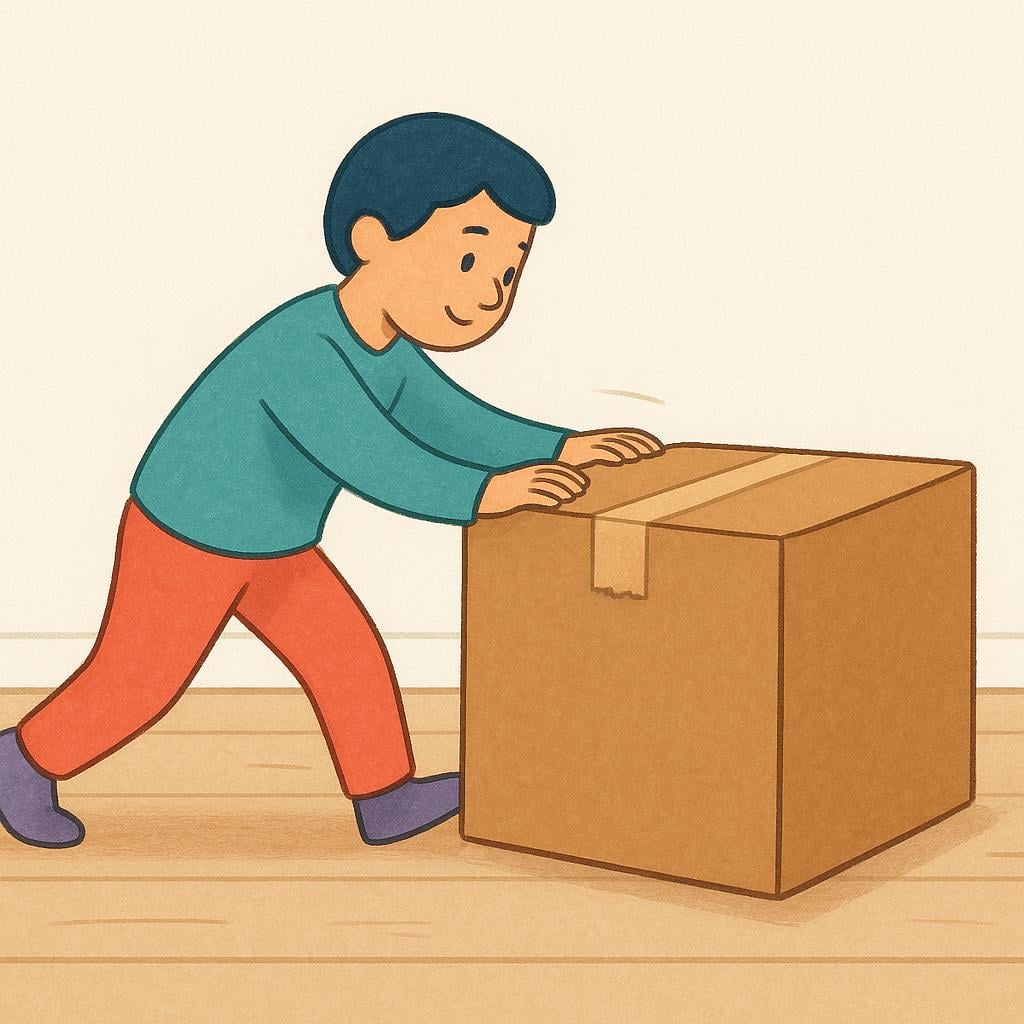mover
/moh-VEHR/
to move

The word mover can mean 'to move' an object, like physically displacing a box.
mover(verb)
to move
?physical displacement of an object
,to shift
?changing an object's position
to stir
?mixing liquids or food
📝 In Action
Tienes que mover la mesa para que quepa.
A1You have to move the table so it fits.
Ella mueve la cabeza diciendo que no.
A2She shakes her head saying no.
¿Puedes mover la cuchara en la sopa, por favor?
A2Can you stir the spoon in the soup, please?
💡 Grammar Points
Stem-Changing Verb
This verb is irregular because the 'o' changes to 'ue' in the present tense (muevo, mueves, mueve, mueven). Remember that the 'we' (nosotros) and 'you all' (vosotros) forms are exceptions and keep the 'o' (movemos, movéis).
❌ Common Pitfalls
Forgetting the Stem Change
Mistake: "Yo movo la caja."
Correction: Yo muevo la caja. Remember the 'o' changes to 'ue' when the stress is on the verb stem.
⭐ Usage Tips
Physical Movement
Use 'mover' when you are the one causing an object to shift. If you are talking about yourself changing location (traveling), you would typically use 'ir' or 'viajar'.

Mover can also mean 'to move' someone emotionally, evoking strong feelings.
mover(verb)
to move
?to touch or affect emotionally
,to stir up
?to provoke feelings or actions
to inspire
?to motivate
📝 In Action
Su discurso me movió profundamente; casi lloro.
B1Her speech moved me deeply; I almost cried.
La música movió a la multitud a bailar.
B2The music stirred the crowd to dance.
💡 Grammar Points
Emotional Causation
In this sense, 'mover' describes something causing an emotional reaction in someone else. The thing that causes the feeling is the subject, and the person feeling it is the object.
⭐ Usage Tips
Stronger Alternatives
For very strong emotional impact, 'conmover' (to profoundly move) is often used instead of just 'mover'.

When used reflexively (mover oneself), it means 'to change one's own position' or move one's body.
mover(verb)
to move oneself
?to change one's own position
,to get moving
?to hurry up or start an activity
to exercise
?to move one's body for health
📝 In Action
¡Muévete! Vamos a llegar tarde.
A1Move! / Get going! We are going to be late.
El bebé ya puede moverse solo.
A1The baby can already move by himself.
Si no te mueves, te quedarás frío.
A2If you don't move, you will get cold.
💡 Grammar Points
Reflexive Action
The reflexive form ('moverse') means the subject is doing the action to itself. You must include the correct pronoun (me, te, se, nos, os, se) before the verb: 'Yo me muevo' (I move myself).
❌ Common Pitfalls
Mixing Transitive and Reflexive
Mistake: "Yo muevo a la izquierda."
Correction: Yo me muevo a la izquierda. If *you* are changing your position, you must use the reflexive form 'moverse'.
⭐ Usage Tips
Imperative Shortcut
When giving a command, the reflexive pronoun attaches to the end. Since 'mueve' is the command, you get 'Muévete' (Move!). Don't forget the written accent mark to keep the stress on the correct syllable.
🔄 Conjugations
indicative
present
imperfect
preterite
subjunctive
present
imperfect
✏️ Quick Practice
💡 Quick Quiz: mover
Question 1 of 2
Which sentence is correct for 'We are moving the boxes'?
📚 More Resources
Frequently Asked Questions
What is the difference between 'mover' and 'moverse'?
'Mover' is when you move something else (transitive): 'Muevo la silla.' 'Moverse' is when you move yourself, or change your own position (reflexive): 'Me muevo a la derecha.' (I move myself to the right).
Does 'mover' change its stem in every tense?
No. The stem change (o > ue) only happens in the present tense (indicative, subjunctive, and imperative), and it never happens in the 'we' (nosotros) or 'you all' (vosotros) forms. In all other tenses (preterite, imperfect, future, conditional), the verb is completely regular.